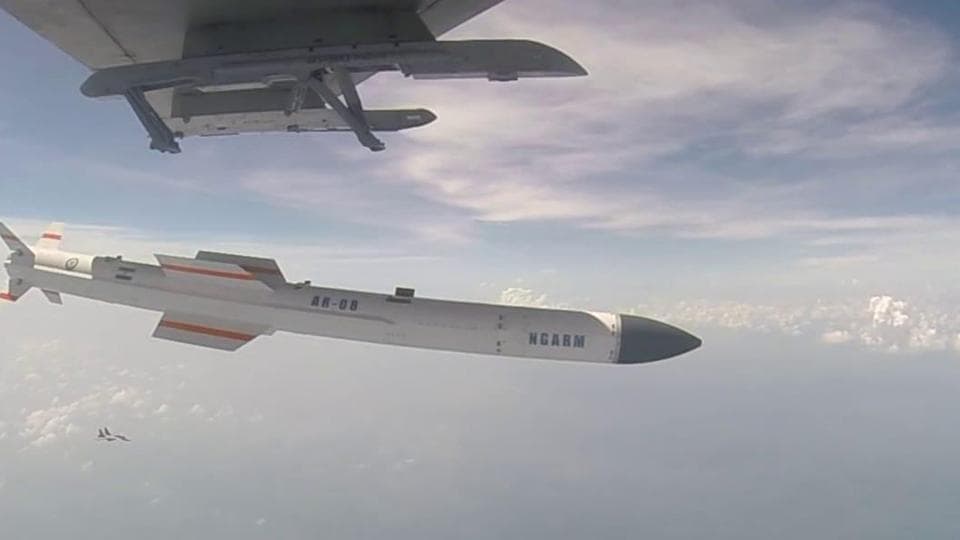SOURCE: RAUNAK KUNDE / NEWS BEAT / IDRW.ORG


The Defense Research and Development Organisation (DRDO) of India is on the cusp of a significant milestone as it prepares to conduct final user and developmental trials of its Indigenous Anti-Radiation Missile, Rudram, later this year.
Rudram, a missile that has undergone meticulous development and refinement, is at the forefront of DRDO’s mission to achieve self-reliance in defence technology. This upcoming round of trials aims to validate and fine-tune the missile’s performance, ensuring it meets the highest standards of efficiency and effectiveness.
The Rudram missile, weighing 600 kilograms, is equipped with a formidable 55-kilogram pre-fragmented warhead. Its operational range of 150 kilometres positions it as a potent tool for engaging targets within a considerable distance. What truly sets Rudram apart is its incorporation of two advanced RF seekers—a passive seeker and a cutting-edge MMW (Millimeter Wave) seeker. These seekers grant Rudram the capacity to detect and engage a wide range of targets, particularly those with active radar emissions.
One of the key features of Rudram is its use of a Dual-Pulse Rocket Motor, which imparts the missile with exceptional speed and manoeuvrability. This propulsion system ensures that Rudram can close in on its targets swiftly and accurately, a critical attribute in the realm of air defence.
Moreover, Rudram’s capabilities extend beyond neutralizing ground-based radar systems. As part of its evolution, Rudram has proposed an upgrade that would enable it to tackle aerial threats, including airborne early warning and control system (AWACS) platforms. The ability to counter such high-value targets solidifies Rudram’s role as a versatile and indispensable asset in India’s air defence arsenal.
To facilitate the upcoming trials, DRDO has procured five sets of an improved variant of Rudram. These enhancements are expected to address any technical challenges that may have arisen since the missile’s previous tests three years ago. The comprehensive trials will assess Rudram’s performance across various scenarios, providing valuable insights that can contribute to further refinements.
The tests are particularly crucial in validating Rudram’s effectiveness against ground-based air defence radars. This capability, if proven successful, could significantly enhance India’s tactical advantage in countering aerial threats.
NOTE : Article cannot be reproduced without written permission of idrw.org in any form even for YouTube Videos to avoid Copy right strikes